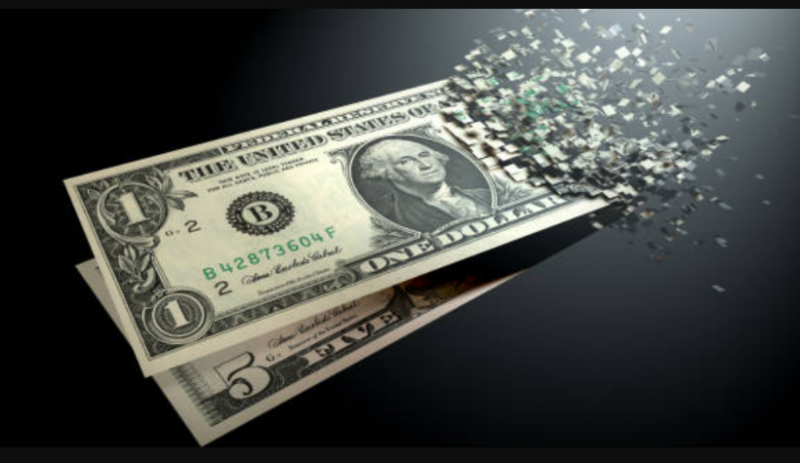
Washington: Over many years, the U.S. dollar has dominated international trade and capital flows.
However, in order to lessen their reliance on the United States, many countries are looking for alternatives to the dollar, as Bruo Venditti of Visual Capitalist explains below.
This graph charts the rise of the dollar as the main reserve currency around the world as well as recent efforts by different countries to dedollarize and lessen their reliance on the American financial system.
Also Read: In their bilateral trade, Bangladesh and India are phasing out the use of the US dollar
After World War I, the United States virtually overnight overtook other financial powers. Only entering the conflict in 1917, the nation beat out its European rivals in strength.
As a result, the dollar started to replace the pound sterling as the world's reserve currency, and the United States also started to receive a sizable amount of gold imports during the war.
After 44 nations signed the Bretton Woods Agreement, which established a global system of currency exchange tied to the U.S. dollar, which was in turn tied to the price of gold, the dollar then came to play a bigger role in world affairs.
European and Japanese exports started to compete more favourably with American exports by the late 1960s. It was challenging to back dollars with gold because there was a plentiful supply of dollars all over the world. In 1971, President Nixon ended the direct exchange of US dollars for gold. As a result, both the gold standard and the printing restriction on money were abolished.
The U.S. dollar has steadily lost purchasing power since then, despite continuing to be the world's reserve currency.
Other countries are experimenting with alternatives to the dollar to lessen the country's hegemony over the world financial system due to concerns about American dominance and the country's capacity to "weaponize" it.
As a result of the economic sanctions put in place by the United States and other Western countries against Russia as a result of its invasion of Ukraine, Moscow and the Chinese government have been working together to reduce their reliance on the dollar and to establish financial system cooperation.
The trade between the ruble and yuan has multiplied eighty-fold since the invasion in 2022. Russian news agency Vedmosti claims that Russia and Iran are also collaborating to introduce a cryptocurrency backed by gold.
As nations move to diversify their reserves away from the dollar, central banks have also purchased gold at the fastest rate since 1967, particularly those of China and Russia.
Also Read: A key food staple may become scarce worldwide
The two biggest economies in South America, Brazil and Argentina, have recently discussed the idea of creating a single currency. Several former Southeast Asian officials discussed ongoing de-dollarization efforts at a conference in Singapore in January.
According to Reuters, the UAE and India are in talks to switch from trading non-oil commodities in dollars to doing so in rupees. Saudi Arabia announced that the oil-rich country is open to trading in currencies other than the U.S. dollar for the first time in 48 years.
Also Read: India moves up Six spots to rank 38 on World Bank logistics index
Despite these developments, few anticipate the dollar's status as the world's reserve currency to end anytime soon. Approximately 60% of central banks' foreign exchange reserves are still held in dollars at this time.